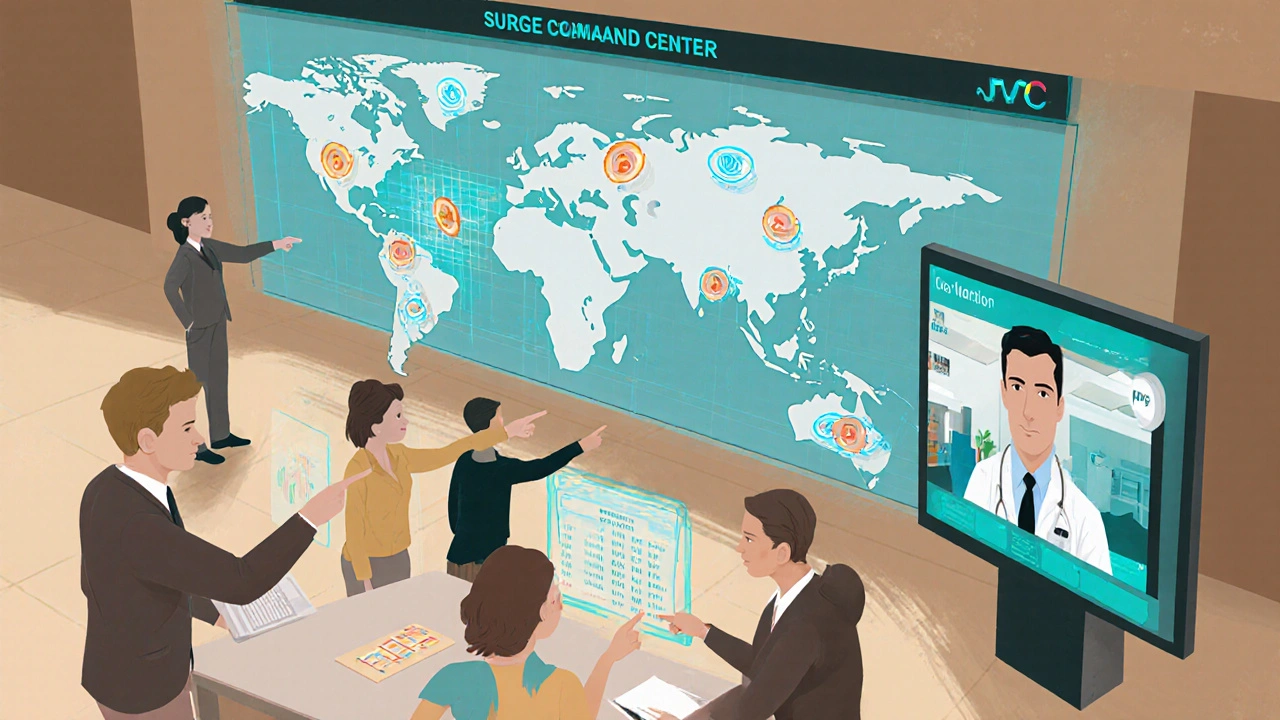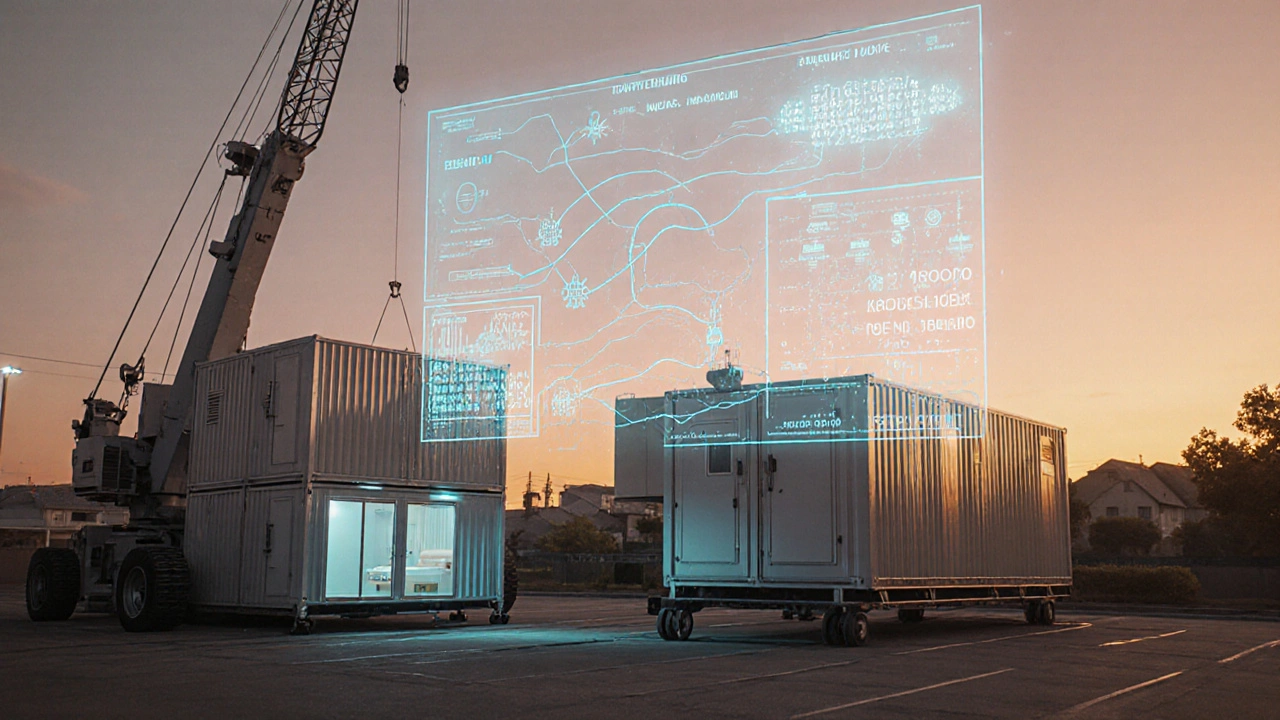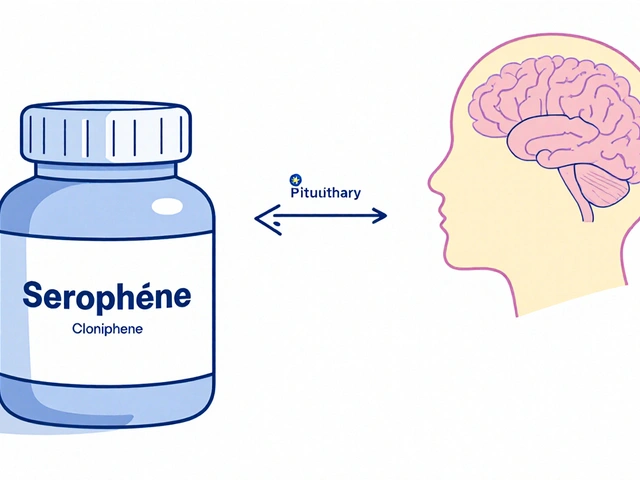Healthcare Resource Surge Calculator
Resource Requirements Analysis
ICU Bed Requirements
Projected beds needed:
Current capacity: beds | Buffer needed: beds
Ventilator Needs
Additional ventilators required:
Current ventilators: units
PPE Recommendations
Suggested action:
Current stock level: months
When a new strain of novel influenza starts spreading, hospitals can go from full capacity to overflow in a matter of days. The scramble for beds, staff, and protective gear isn’t just a headline story - it’s a daily reality for clinicians, administrators, and public‑health officials. This guide breaks down what a novel influenza looks like, why it puts pressure on every part of the healthcare system a network of hospitals, clinics, labs, and public‑health agencies that deliver medical care to a population, and how you can keep resources flowing when the next wave hits.
What is a novel influenza?
A novel influenza an influenza virus that has not previously circulated widely in humans, meaning there is little to no pre‑existing immunity in the population can emerge from animal reservoirs, mutate in humans, or recombine with other flu strains. Because people lack antibodies, the virus can spread quickly, cause severe disease, and overwhelm health services. Unlike seasonal flu, a novel strain may not respond to existing vaccines, forcing health authorities to rely on antivirals, non‑pharmaceutical interventions, and rapid vaccine development.
How outbreaks strain the healthcare system
During a novel influenza surge, the healthcare system the collection of hospitals, primary‑care clinics, emergency departments, and public‑health infrastructure that provide medical services faces three interconnected pressures:
- Patient volume spikes: Emergency departments see a sudden influx of flu‑like illness, pushing wait times and diverting resources from other emergencies.
- Resource depletion: ICU beds, ventilators, and personal protective equipment (PPE) are consumed faster than they can be replenished.
- Staff fatigue and absenteeism: Front‑line workers fall ill or need quarantine, thinning the workforce when it’s needed most.
These pressures feed into each other - a shortage of staff reduces the ability to turn over beds, which in turn lengthens patient stays and further crowds the system.

Key resources that need proactive management
Effective pandemic response hinges on tracking and protecting a handful of critical assets. Below is a quick rundown of the six most vulnerable resources:
- ICU capacity the number of intensive‑care beds equipped for mechanical ventilation and advanced monitoring
- Ventilators machines that assist or replace breathing for patients with respiratory failure
- Personal protective equipment protective gowns, masks, gloves, and eye protection that prevent transmission to healthcare workers
- Antiviral stockpile reserve of medications such as oseltamivir used for treatment and prophylaxis
- Vaccine supply chain logistics for storing, distributing, and administering influenza vaccines once they become available
- Diagnostic capacity laboratory ability to confirm influenza infection quickly, guiding treatment and isolation decisions
| Resource | Pre‑stock Approach | Just‑in‑Time Approach |
|---|---|---|
| ICU Beds | Maintain a 20% surge reserve in regional hospitals. | Activate temporary field hospitals when occupancy >85%. |
| Ventilators | National stockpile of 10,000 units, refreshed every 5 years. | Contract with manufacturers for rapid scaling (48‑hour lead time). |
| PPE | Three‑month buffer of N95 masks and gowns per facility. | Centralized distribution hub with real‑time inventory tracking. |
| Antivirals | 12‑month national reserve based on population‑adjusted dosing. | Pharmacy‑level surge ordering with priority access. |
Strategic approaches to surge capacity
When the first wave hits, you need a playbook that can be activated within hours. Below are five proven tactics:
- Tiered activation protocol: Define clear thresholds (e.g., 70% ICU occupancy) that trigger pre‑planned actions like opening overflow units.
- Cross‑training staff: Teach surgical nurses basic ICU monitoring so they can fill gaps when critical‑care nurses are absent.
- Consolidated supply hubs: Centralize PPE and drug distribution to avoid duplication and enable bulk re‑ordering.
- Digital triage platforms: Use telehealth to assess mild cases remotely, sparing in‑person resources for those who truly need care.
- Public‑health partnership: Align hospital surge plans with the public health agency government body responsible for disease surveillance, reporting, and community guidance to coordinate testing sites and vaccination clinics.
Operational checklist for administrators
Keep this list on your desk or in a shared drive. Tick each item as you complete it.
- Verify current ICU bed count and projected surge capacity for the next 14 days.
- Confirm availability of at least 30% additional ventilators in the regional stockpile.
- Audit PPE inventory; reorder to maintain a three‑month buffer.
- Secure contracts with local manufacturers for rapid PPE and antiviral scaling.
- Update staff rosters with cross‑training assignments and backup pools.
- Activate telemedicine gateway and publish a self‑screening questionnaire for the public.
- Coordinate daily briefings with the county health department’s outbreak response team.
- Run a tabletop simulation of a 48‑hour surge to test communication channels.

Case snapshots: lessons from recent outbreaks
Real‑world experience sharpens theory. Here are three recent events that reshaped resource planning:
- 2009 H1N1 pandemic: Hospitals that pre‑positioned oseltamivir avoided stock‑out emergencies, but many ran out of N95 masks within two weeks.
- COVID‑19 (2020‑2022): The sudden need for ventilators highlighted the value of reusable devices and flexible manufacturing partnerships. Telehealth adoption jumped from 15% to 70% of outpatient visits, easing pressure on waiting rooms.
- 2023 avian‑influenza spillover in Europe: Regional coordination of ICU overflow units reduced mortality by 12% compared to isolated hospital responses.
Across these scenarios, the common thread is early visibility into resource gaps and a willingness to shift from static stockpiles to dynamic, data‑driven allocation.
Future‑proofing: building resilient systems
Preparedness is not a one‑time checklist; it’s an evolving ecosystem. Consider investing in these forward‑looking capabilities:
- AI‑driven demand forecasting: Machine‑learning models can predict bed occupancy 10‑14 days in advance using syndromic surveillance data.
- Modular field hospitals: Prefabricated units that plug into existing utility networks can be deployed in under 48 hours.
- Supply‑chain digital twins: Simulate the flow of PPE and drugs under different disruption scenarios to identify bottlenecks before they happen.
- Community vaccination hubs: Partner with pharmacies and schools to create drop‑in sites, ensuring rapid rollout once a vaccine is authorized.
- Expanded tele‑ICU networks: Remote intensivists can monitor patients across multiple hospitals, extending expertise where it’s scarce.
By embedding these tools into everyday operations, hospitals turn a reactive scramble into a proactive, scalable response.
Frequently Asked Questions
What distinguishes a novel influenza from seasonal flu?
A novel influenza is a newly emerging strain that the general population has little or no immunity against, whereas seasonal flu viruses circulate each year and most people have some level of pre‑existing protection.
How can hospitals estimate needed ICU surge capacity?
Use historical admission data combined with real‑time epidemiological curves to model occupancy. A common rule is to maintain a 20‑30% buffer above baseline capacity for a worst‑case scenario.
What role does telemedicine play during an influenza surge?
Telemedicine screens mild cases, reduces unnecessary emergency‑department visits, and frees clinicians to focus on severe patients. It also allows remote monitoring of home‑bound high‑risk individuals.
How often should PPE stockpiles be refreshed?
PPE should be rotated at least every six months to avoid degradation, and inventory counts must be verified quarterly to match usage forecasts.
Can AI reliably predict influenza hospitalizations?
When fed with real‑time syndromic data, weather patterns, and mobility metrics, AI models have achieved 85% accuracy in 7‑day hospitalization forecasts, helping administrators activate surge plans early.






8 Comments
Wow!!! The surge calculator is surprisingly intuitive-just plug in your current ICU bed count and watch the numbers flash. It really drives home how quickly capacity can evaporate when a novel flu hits!!! The buffer suggestion (30%) is a solid safety net; I’d even push it to 40% if you can swing the staff. Also, the visual progress bars give a quick snapshot-no need to stare at spreadsheets. Overall, a great tool for administrators who need fast, data‑driven decisions!!!
This guide nails the key resources you must monitor during a pandemic. The tables contrasting pre‑stock versus just‑in‑time really underline the trade‑offs, especially for ventilators. I appreciate the emphasis on cross‑training staff; having OR nurses step into ICU roles can be a game‑changer when ICU nurses fall ill. The checklist at the end is spot‑on for daily briefings-simple, actionable items that keep everyone on the same page.
Reading through this, I’m struck by how the layered approach to surge capacity mirrors military logistics, and that’s exactly why it works. First, you need clear thresholds-70% ICU occupancy is a solid trigger for activating overflow units, and it gives staff a concrete signal. Second, the use of modular field hospitals can shave days off deployment time, turning a crisis into a managed event. Third, a three‑month PPE buffer isn’t just a number; it’s a survivability metric for frontline workers. Fourth, integrating tele‑ICU platforms extends specialist coverage without moving the physical equipment. Fifth, the recommendation to maintain a 20‑30% ventilator reserve aligns with data showing ventilator shortages drive mortality spikes. Sixth, the AI‑driven forecasting models you mention have already proven 85% accuracy in 7‑day forecasts, which is enough lead‑time to mobilize resources. Seventh, investing in reusable ventilators reduces dependency on single‑use supply chains that can choke under demand. Eighth, the regular rotation of PPE every six months prevents degradation, a detail many overlook. Ninth, daily coordination with public‑health agencies ensures community testing aligns with hospital capacity. Tenth, the emphasis on staff mental health is crucial; burnout can negate any resource surplus. Eleventh, the table showing a 20% ICU surge reserve is realistic for most regional hospitals. Twelfth, the suggestion to run tabletop simulations every quarter keeps response plans fresh. Thirteenth, cross‑training surgical staff provides a flexible labor pool when ICU staff are quarantined. Fourteenth, the focus on diagnostic capacity ensures rapid case confirmation, which feeds the AI models. Fifteenth, a central supply hub with real‑time inventory tracking eliminates duplication and enables bulk re‑ordering. In short, this guide is a comprehensive playbook that translates theory into actionable steps, and if hospitals adopt it fully, we’ll see mortality rates drop dramatically during the next novel influenza wave.
Great points above! 🙌 I’d add that having a dedicated emoji‑friendly chat channel for rapid updates can keep staff morale up while they’re in PPE. Also, don’t forget to stash a few extra power strips for the field hospital setups-those things disappear fast! 😊
From a formal perspective, the drama of a sudden surge cannot be overstated. The immediate need for additional ICU spaces triggers a cascade of logistical challenges, each demanding precise coordination. Your suggestion to activate overflow units at 85% occupancy provides a quantifiable metric that administrators can rally around. Moreover, the recommendation to pre‑position a national stockpile of 10,000 ventilators is both bold and necessary. In my view, the integration of digital triage platforms should be mandated by health authorities to streamline patient flow.
I really appreciate the empathy woven into the resource recommendations. Highlighting staff fatigue and offering concrete solutions like rotating shifts and mental‑health check‑ins shows we’re caring for the caregivers. Also, the reminder to rotate PPE stock every six months is a practical tip that can save lives.
We must prioritize American hospitals and keep our resources at home.
Cross‑train nurses now.